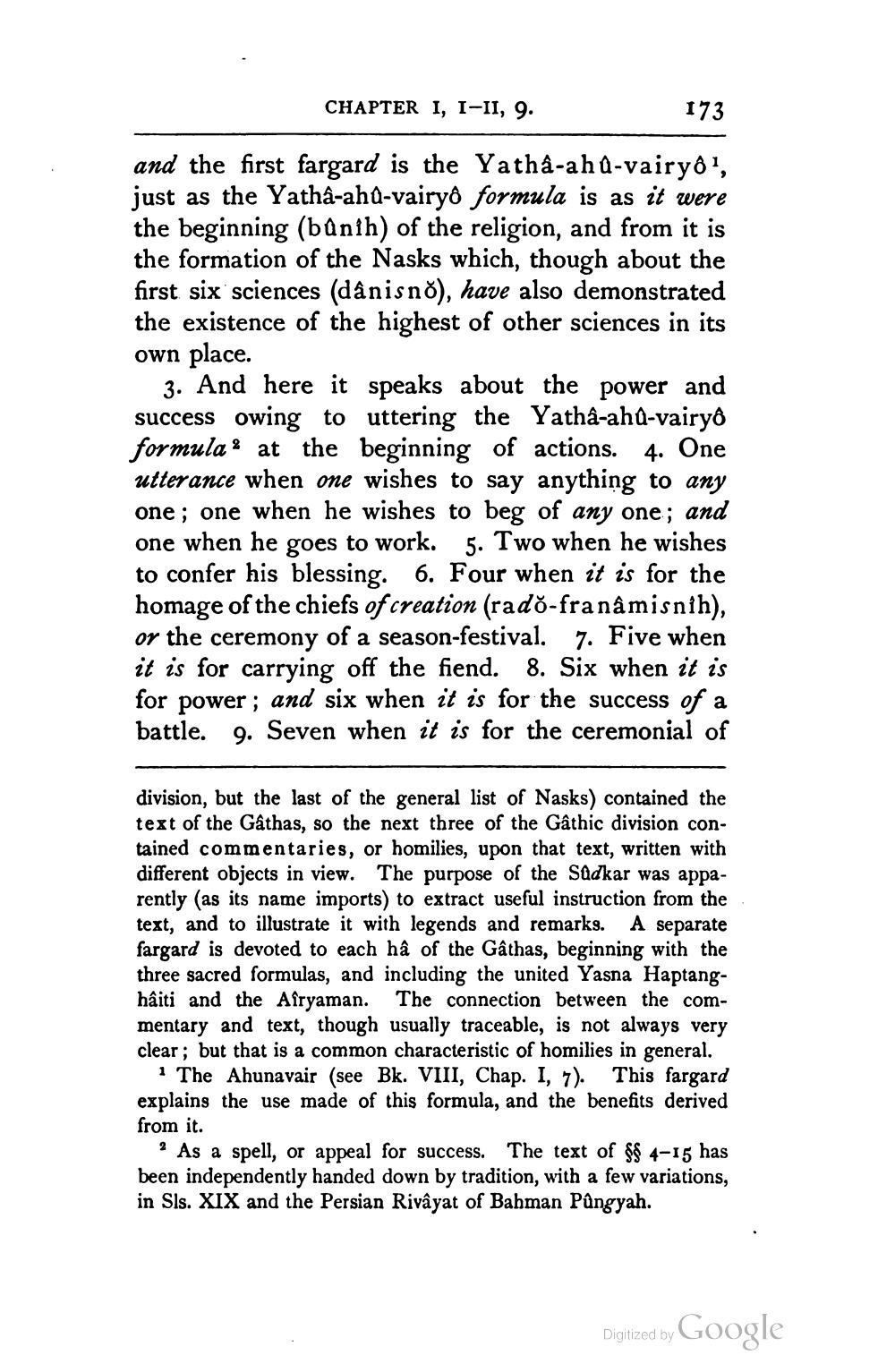________________
CHAPTER I, I-II, 9.
173
and the first fargard is the Yathâ-ahd-vairyo?, just as the Yathâ-ahd-vairyô formula is as it were the beginning (bûnih) of the religion, and from it is the formation of the Nasks which, though about the first six sciences (danisno), have also demonstrated the existence of the highest of other sciences in its own place.
3. And here it speaks about the power and success owing to uttering the Yathâ-ahd-vairyo formula? at the beginning of actions. 4. One utterance when one wishes to say anything to any one ; one when he wishes to beg of any one; and one when he goes to work. 5. Two when he wishes to confer his blessing. 6. Four when it is for the homage of the chiefs of creation (rado-franâmisnih), or the ceremony of a season-festival. 7. Five when it is for carrying off the fiend. 8. Six when it is for power; and six when it is for the success of a battle. 9. Seven when it is for the ceremonial of
division, but the last of the general list of Nasks) contained the text of the Gathas, so the next three of the Gâthic division contained commentaries, or homilies, upon that text, written with different objects in view. The purpose of the Sodkar was apparently (as its name imports) to extract useful instruction from the text, and to illustrate it with legends and remarks. A separate fargard is devoted to each hâ of the Gathas, beginning with the three sacred formulas, and including the united Yasna Haptanghaiti and the Afryaman. The connection between the commentary and text, though usually traceable, is not always very clear; but that is a common characteristic of homilies in general.
1 The Ahunavair (see Bk. VIII, Chap. I, 7). This fargard explains the use made of this formula, and the benefits derived from it.
2 As a spell, or appeal for success. The text of $$ 4-15 has been independently handed down by tradition, with a few variations, in Sls. XIX and the Persian Rivâyat of Bahman Pùngyah.
Digitized by Google




